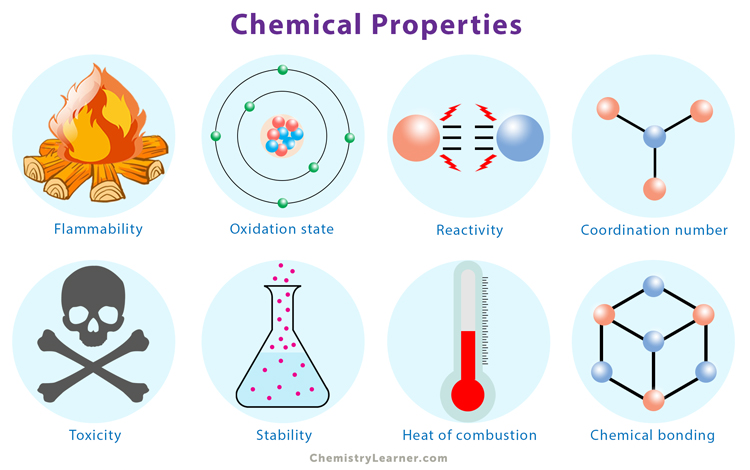The realm of chemistry brims with complexity and intrigue, largely attributable to the myriad chemical properties governed by atomic structure. Understanding what determines these chemical properties requires a comprehensive exploration of atomic characteristics, interplay between particles, and the principles governing their interactions. This inquiry not only enriches our scientific knowledge but also promises a shift in perspective regarding matter, fostering a profound appreciation for the elemental building blocks of our universe.
At the most fundamental level, the chemical properties of an atom are dictated by its electron configuration. Electrons, possessing negative electrical charges, occupy distinct energy levels or shells surrounding the nucleus. These shells dictate an atom’s reactivity, influencing how readily it can interact with other atoms. The arrangement of electrons, particularly those in the outermost shell, known as valence electrons, is critical. Elements that possess a complete outer shell exhibit minimal reactivity, while those with incomplete shells actively seek to bond with other atoms to achieve stability.
The periodic table is a crucial tool for visualizing the correlation between an atom’s structure and its chemical properties. Elements are organized in rows and columns based on their atomic number and electron configurations. This arrangement demonstrates recurring patterns known as periodic trends. For instance, electronegativity—the tendency of an atom to attract electrons—varies across periods and groups, providing insight into bond formation and compound stability. Understanding these trends allows chemists to predict how different elements will interact under varying conditions.
Moreover, the influence of atomic mass cannot be understated. While it primarily dictates an atom’s size and the strength of van der Waals forces—weak attractions between molecules—it also plays a pivotal role in determining molecular geometry. Heavier atoms generally lead to more complex structures, impacting the resultant chemical properties. For example, larger atoms may exhibit increased polarizability, which influences bonding characteristics and solubility in various solvents.
Another significant determinant of an atom’s chemical properties is its ionization energy—the amount of energy required to remove an electron. This energy varies across the periodic table and is instrumental in elucidating why certain elements form cations (positively charged ions) while others form anions (negatively charged ions). A lower ionization energy signifies a greater likelihood of electron loss, facilitating the formation of ionic bonds that underlie a vast array of chemical compounds. This understanding not only assists in the synthesis of novel materials but also in grasping fundamental processes in biological systems.
Furthermore, the chemical properties of an atom are intricately linked to its oxidation states, which denote the degree of oxidation (loss of electrons) of an element within a compound. An atom’s oxidation state influences its reactivity and the types of bonds it can form. For instance, iron can exist in multiple oxidation states, leading to diverse chemical behaviors, such as in the formation of rust. This versatility is a testament to the intricate nature of atomic interactions, whereby a single element can exhibit dramatically different properties based on its electron distribution and oxidation state.
Additionally, the intermolecular forces, such as hydrogen bonding and van der Waals forces, further elucidate the chemical behaviors of atoms when in molecular form. These forces arise due to the polar nature of molecules formed by varying electronegativity between atoms. Such interactions influence boiling points, melting points, and solubility, amplifying our understanding of how atoms conglomerate to form cohesive units. The analysis of these forces enriches the comprehension of chemical properties beyond isolated atoms, extending the inquiry into the realm of macroscopic material properties.
Isotopes, or variants of elements characterized by differing numbers of neutrons, also contribute to our understanding of chemical properties. While isotopes of an element share identical chemical behavior, their physical properties markedly differ, particularly in nuclear stability and behavior under radiation. This phenomenon is pivotal in applications such as radiometric dating, where the relative abundance of isotopes can provide insights into historical timelines and processes that shaped our planet.
The role of covalent and ionic bonding in determining the chemical properties of an atom deserves special attention. Covalent bonds result from the sharing of electrons between atoms, leading to the formation of molecules with distinct characteristics—polarity, reactivity, and stability. Conversely, ionic bonds are established through the transfer of electrons, resulting in charged entities that engage in strong electrostatic interactions. The nature of these bonds significantly affects the chemical behavior of compounds, dictating solubility in solvents and conductivity in solution.
In conclusion, the factors that delineate the chemical properties of an atom are multifaceted, encompassing electron configuration, atomic mass, ionization energy, oxidation states, and the enigmatic interplay of various bonding types. This exploration not only augments our comprehension of atomic interactions but also paves the way for innovative applications across scientific fields, from material science to pharmacology. The pursuit of knowledge in this domain cultivates a deeper appreciation for the underlying principles dictating the behavior of matter, ultimately inviting us to rethink our understanding of the elemental forces shaping the universe. This reflection on atomic properties affirms that even the minutest of particles holds profound implications for the grand tapestry of existence, encouraging continuous inquiry into the wonders of chemistry.












